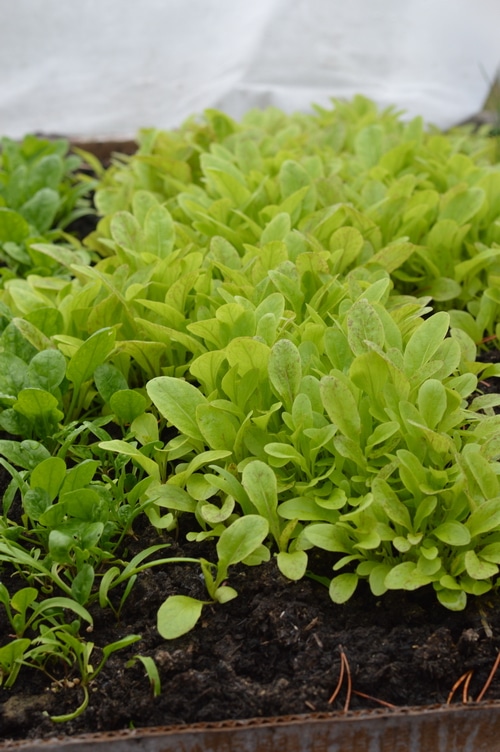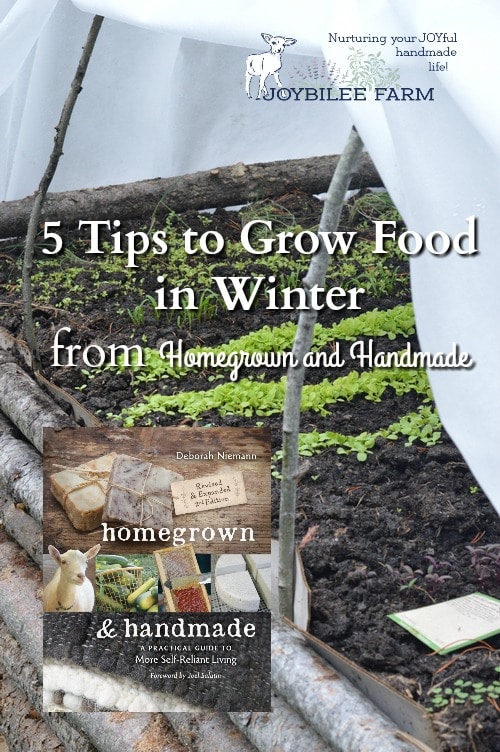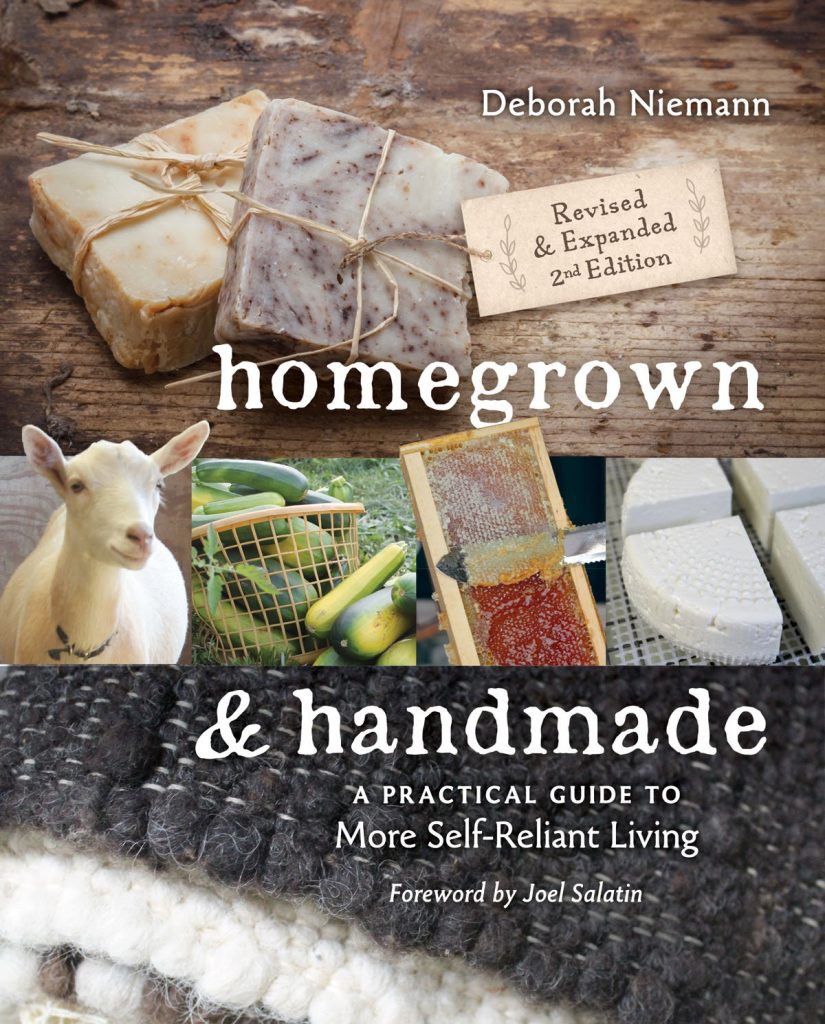If you want to grow food in winter, when the garden is beginning to produce in the summer and you start clearing out the garlic, peas, beans, and lettuce, it’s time to plan your winter garden. But don’t think of winter gardening as more work for smaller yields. On the contrary, your winter garden can be your most productive garden if you understand the principles behind growing food in winter.
If you live in a temperate area where the winter temperatures dip below freezing you probably won’t be growing tomatoes and cucumbers in the winter. Instead winter has it’s own crops.
Winter gardeners aren’t fighting summer’s bugs and plant diseases. There’s no weeding to do. Are you intrigued? Follow these tips and you will be bringing in garden vegetables when your neighbors are paying $3 a head for lettuce in March.
5 Tips to Grow Food in Winter
Plant Hardy Root Vegetables
Root vegetables, like beets, carrots, parsnips, radishes, and turnips can handle the freeze-thaw cycles without turning to mush. You may already be growing them in your summer garden. Plant a second crop now, in August or early September, to get an early start on the spring crop next year.
Plant cold hardy greens
Cold tolerant greens like arugula, chard, collard greens, lettuce, mache, mustard greens, radicchio, and spinach can handle freezing and thawing during winter without turning to goo. The key, according to Homegrown and Handmade author, Deborah Niemann, is to keep them in a protected structure, like a low tunnel or cloche, and allow them to recover from freezing before harvesting. In this way the green leaves stay choice.
Plant cut and come again greens
Plants like leaf lettuce, arugula, chard, mustard greens, and spinach will regrow after harvest to give you a second and even a third crop of leafy greens. The will continue to grow until your days reach less than 10 hours of daylight, in November or December. Then they will begin to grow again in February, if they are protected under a fabric or glass cloche.

Plant for a winter harvest
Summer plants are lush and fragile because they grow fast in the long daylight hours and heat of summer. But for a winter harvest of hardy plants, you’ll want to start your seeds in midAugust through to September. Greens and roots planted in the Fall, will continue to grow through the frost and then enter a dormant season, when protected under a row tunnel or cold frame. During the dormant season the plants continue to look prime in the tunnel, but they stop growing. They’ll put on fresh growth in the spring when the days lengthen and daytime temperatures warm. You’ll be rewarded with early spring vegetables just as the prices in the grocery store are through the roof.
There’s no gardening in winter only harvesting
During the winter, your winter garden will stop growing. There is no planting, weeding, or even watering to do. The hardy plants in the row tunnel or cloche stand still. There’s time for admiration. Time for harvesting greens and roots. But there’s no gardening work to do. If you plant enough in August and September you can be eating from the garden all winter.
Homegrown and Handmade
Homegrown and Handmade, a Practical Guide to More Self-Reliant Living, by Deborah Niemann is about more than just winter gardening. In its second edition and completely revised and expanded, it is to the self-reliant lifestyle of the 21st century, what Carla Emery’s Encyclopedia of Country Living was to those moving back to the land 40 years ago.
Self reliance begins in the garden, expands to year round gardening and then branches out into chickens, rabbits, goats, and sheep. Before you know it, you’ll be spinning your own wool, harvesting medicinal herbs, and dyeing with natural dyes. And as you are learning all these creative skills Homegrown and Handmade will inspire each project.
First published in 2011, the book is divided into 8 homestead projects. It takes you step by step through the planning stages for each project, into growing and then using the harvest, whether it be vegetables, fruit, meat, eggs, milk, sweeteners, or wool.
In this new expanded edition Neimann includes 3 new chapters on building a homestead business with in-person on and off farm sales. Her information about selling online is quite brief. It would be important for any one following along in Homegrown and Handmade to get specific business advice from both a lawyer and an accountant before investing substantially in a homestead business.
One part of her advice though is outdated and should be read with caution. Neimann states that:
The first thing we sold from our farm was soap because there were no regulations to slow us down. We could use our goat
milk, and we could make the soap in our kitchen. There were no infrastructure requirements or inspection requirements. The only legal thing you have to keep in mind is what you claim on the label. Regardless of how much it helped your son’s eczema or your niece’s acne, do not make any medical claims. (p. 282)
While this was true 10 years ago, this is no longer the case. Soap makers now have to make their soap in a commercial kitchen, follow specific protocols to ensure that there is no cross contamination, and document every step of the procedure that they follow to make their product.
Ingredient supply lists have to be tracked by lot number for recall purposes. Several soap makers have been the subject of FDA inspections in the last 5 years. If you plan to sell soap as part of your homestead business plan please research the requirements in your region carefully. Not making medical claims, of course, continues to be a requirement, when selling any product in your business.
Homegrown and Handmade is an overview of the self-reliant lifestyle. It is a good resource for wanna-be to beginner homesteaders. However, those who are actually doing the work and reaping the harvest, especially the winter harvest, will find that they need more focused resources as they progress on the homestead journey.
Nevertheless, Homegrown and Handmade is a broadview of the self-reliant lifestyle whether you are starting in an apartment in the city or a small acreage.
Disclosure: I received a review copy of this book from the publisher.





You are an amazing gardener. As a gardener, I appreciate your step. Thanks
deborah is amazing; i have been reading and enjoying her site for years!